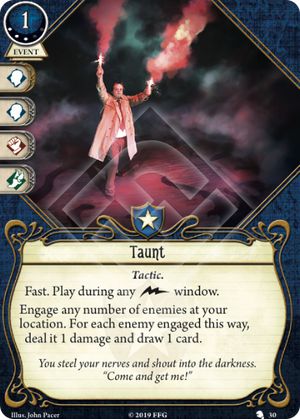
Caveat that I haven't played with this card yet, just finished some research for Grizzled and realized how common and high-impact Hazard treacheries are in Return to the Forgotten Age.
Some notables for that campaign... spoilers follow, but come on, you're not reading the reviews of THIS card if you care about that... Snake Bite, Resentful Wilds, Crypt Chill, Deep Dark, Poisonous Spores, Ants!. Crypt Chill and Ants! can be brutal asset hate pieces. Snake Bite and Poisonous Spores are both notable as Poisoned sources that can situationally be difficult or impossible to avoid. Resentful Wilds and Deep Dark are hit-or-miss, but potentially cost a lot of tempo.
And to top it off, this would be an acceptable, if slightly below rate, health/sanity buffer if the cancel ability didn't exist at all. Guardian gets 3/3 for 3 resources at 0xp, but in an extremely competitive hand slot. Paying 2xp and 1 resource to move that to a much less competitive slot and pick up that treachery cancellation ability seems pretty good to me. Especially in a campaign like Forgotten Age that stresses your health.
Random synergy bonus round - Mark Harrigan still draws a card for cancelling the treachery, since the cancel ability deals 1 damage to the Gear. And you still get your Second Wind / Second Wind extra healing value.



